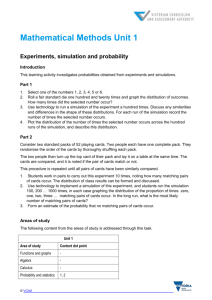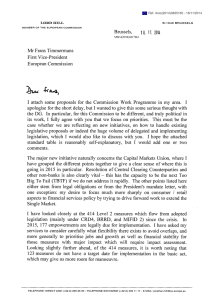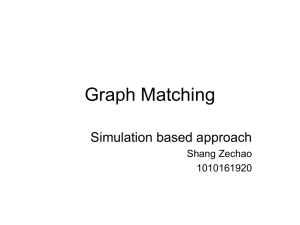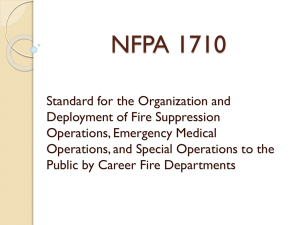Microsoft Word document - SAFEty Research using SIMulation
advertisement
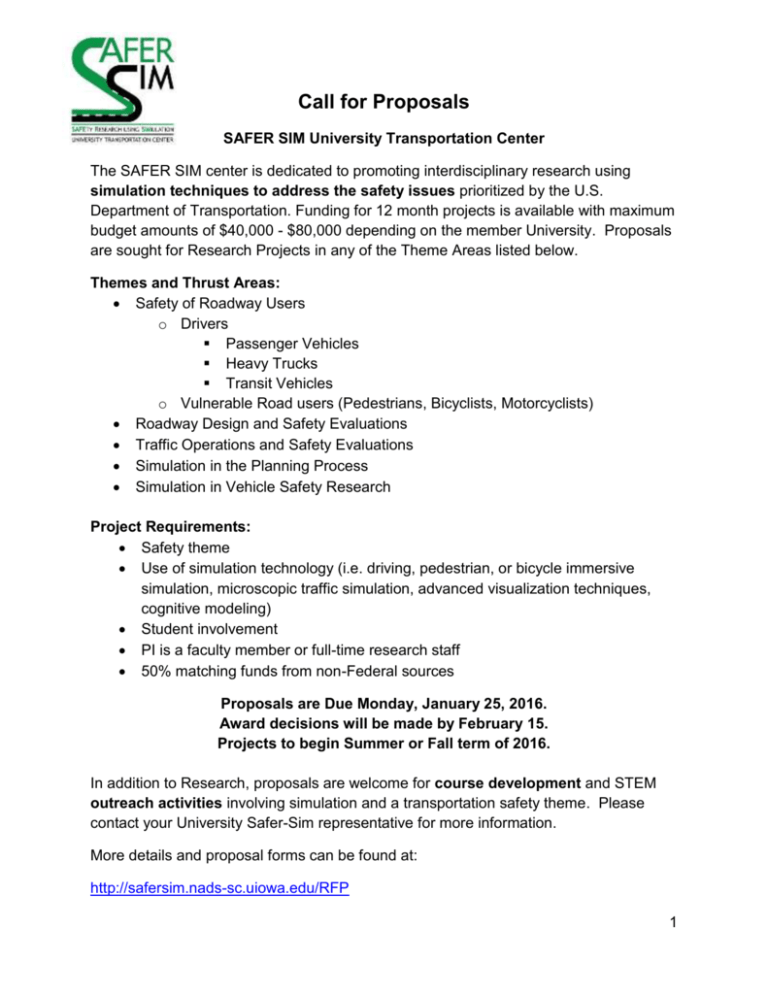
Call for Proposals SAFER SIM University Transportation Center The SAFER SIM center is dedicated to promoting interdisciplinary research using simulation techniques to address the safety issues prioritized by the U.S. Department of Transportation. Funding for 12 month projects is available with maximum budget amounts of $40,000 - $80,000 depending on the member University. Proposals are sought for Research Projects in any of the Theme Areas listed below. Themes and Thrust Areas: Safety of Roadway Users o Drivers Passenger Vehicles Heavy Trucks Transit Vehicles o Vulnerable Road users (Pedestrians, Bicyclists, Motorcyclists) Roadway Design and Safety Evaluations Traffic Operations and Safety Evaluations Simulation in the Planning Process Simulation in Vehicle Safety Research Project Requirements: Safety theme Use of simulation technology (i.e. driving, pedestrian, or bicycle immersive simulation, microscopic traffic simulation, advanced visualization techniques, cognitive modeling) Student involvement PI is a faculty member or full-time research staff 50% matching funds from non-Federal sources Proposals are Due Monday, January 25, 2016. Award decisions will be made by February 15. Projects to begin Summer or Fall term of 2016. In addition to Research, proposals are welcome for course development and STEM outreach activities involving simulation and a transportation safety theme. Please contact your University Safer-Sim representative for more information. More details and proposal forms can be found at: http://safersim.nads-sc.uiowa.edu/RFP 1 Safer-Sim 2015 Detailed Instructions for Research Proposals The research selection process is in two phases. Proposers first submit a two page project idea form. This form is reviewed by the Associate Director of the respective University to assess whether the project meets the goals and themes of the Center, the budget is appropriate, and whether matching funds are available. If these criteria are met, the project idea form is circulated among the other consortium universities for review by other faculty and staff using the criteria listed below. In phase two, the Principal Investigators of top ranked proposals are then invited to submit a more detailed research plan. The number of projects funded will depend on the amount of the funding requests of the top tier of proposals. These detailed research plans will be reviewed by the director and associate directors to be assessed for research quality, feasibility, availability of matching funds, and relevance to Center themes. Selection criteria: Projects well aligned with the themes of the center and the US DOT safety priorities (see next page) Projects providing at least 25% graduate research assistantships Interdisciplinary projects involving students and faculty from multiple departments and colleges Research that applies simulation technology in a new way and expands simulation tools for roadway safety analysis Projects that could be used in science outreach and education activities to promote interest in transportation careers. Projects that involve collaboration with other SaferSim consortium members Important Dates December 15 January 25 February 15 March 1 March 15 RFP for brief project idea submission 2-page Project Idea forms due Successful PIs invited to submit detailed proposal Detailed Proposals due Funding decisions announced Format: All project ideas should be submitted as a PDF. An outline and additional formatting information is provided on page 6 of this document. 2 Our center aims to address safety priorities of the U.S. Department of Transportation. The relevant section from the transportation authorization law is provided below to help guide proposers’ topics. US DOT Safety Priorities from (MAP-21 Moving Ahead for Progress in the 21st Century Act (P.L. 112-141) transportation authorization law, July 6, 2012) Section 503. Research and Technology Development and Deployment (b) Highway Research and Development Program (2) Improving Highway Safety (A) IN GENERAL.—The Secretary shall carry out research and development activities from an integrated perspective to establish and implement systematic measures to improve highway safety. (B) OBJECTIVES.—In carrying out this paragraph, the Secretary shall carry out research and development activities— (i) to achieve greater long-term safety gains; (ii) to reduce the number of fatalities and serious injuries on public roads; (iii) to fill knowledge gaps that limit the effectiveness of research; (iv) to support the development and implementation of State strategic highway safety plans; (v) to advance improvements in, and use of, performance prediction analysis for decisionmaking; and (vi) to expand technology transfer to partners and stakeholders. (C) CONTENTS Research and technology activities carried out under this paragraph may include— (i) safety assessments and decisionmaking tools; (ii )data collection and analysis; (iii) crash reduction projections; (iv) low-cost safety countermeasures; (v) innovative operational improvements and designs of roadway and roadside features; (vi) evaluation of countermeasure costs and benefits; (vii) development of tools for projecting impacts of safety countermeasures; (viii) rural road safety measures; (ix) safety measures for vulnerable road users, including bicyclists and pedestrians; (x )safety policy studies; (xi) human factors studies and measures; (xii )safety technology deployment; (xiii) safety workforce professional capacity building initiatives; (xiv) safety program and process improvements; and (xv)tools and methods to enhance safety performance, including achievement of statewide safety performance targets. 3 Proposers are also encouraged to consult the Transportation Research Board’s Research Needs database for topics identified as high priority by TRB standing technical committees http://rns.trb.org/. TRB also maintains a list of research in progress by University Transportation Centers, state DOTs and other institutions. Proposers are encouraged to consult this list to assure that their idea does not duplicate a project in progress or can explain in the proposal how their idea is related to on-going research. http://rip.trb.org/ Examples of potential projects are listed below Theme Area Safety Evaluations Roadway Design Traffic Operations Vulnerable Road Users Planning Vehicle Safety Example Using driving simulators to conduct virtual Road Safety Audits Using simulation in the roadway design process to drive the road before it is built Using driving simulators and microsimulation as a platform to examine proposed operational changes and new technologies Using pedestrian and bicycling simulators to examine design and operational changes on user behavior Creating 3D visualizations to improve planning and public communication Using driving simulators to assess the usability of in-vehicle safety systems Our center will be evaluated using the following performance metrics. Each project leader will be expected to report performance in terms of these metrics as they apply during and after the project ends. Short Term Metrics # peer review publications Quality of those journals Conference presentations and papers Paper awards for faculty and students Presentations to public agencies # UTC proposals received Long Term Metrics Changes to DOT practice # of citations to our work # others using our simulation techniques # others using our data analysis techniques # projects funded by other agencies Diversity of those funding agencies UTC-funded faculty and departments will also be asked to contribute to other Federal reporting requirements including number of: 1) transportation-related courses offered taught by UTC associates 2) students participating in research projects funded by the UTC 3) transportation-related advanced degree programs that fund graduate students with UTC funds 4) graduate students supported master’s and doctoral level 5) supported students who received degrees 4 6) and total dollar value of research projects selected for funding considered to be applied and advance research In addition, our center as a whole will be evaluated by the US DOT using the following performance metrics. The number of: 1) transportation-related courses offered taught by UTC associates 2) students participating in research projects funded by the UTC 3) transportation-related advanced degree programs that fund graduate students with UTC funds 4) graduate students supported master’s and doctoral level 5) supported students who received degrees 6) and total dollar value of research projects selected for funding considered to be applied and advance research Reporting requirements Each project lead will need to provide the following Semi-annual progress report Matching fund sources documentation A description of technology transfer activities including research papers and conference presentations, integration of research into courses, involvement of local and state DOTs Matching funds requirement Each project funded by a UTC is required to obtain matching funds from nonfederal sources. The amount of matching funds required for a Safer-Sim (A Tier I UTC) is 50 percent (for every $1 funded by the grant, the proposer must provide $0.50 in matching funds). Matching funds must be from non-federal sources and may take the form of departmental fellowships or tuition funding using nonfederal funds, faculty release time, documented in-kind support from private companies or institutions, matched funding from related research projects not funded federally. Each project will need to comply with their own University’s procedure to document these matching funds and report this to the Safer-Sim administration. 5 Submission Process Phase 1: Project ideas (2 pages) should be submitted at the web-site below in PDF format with no identifying information in the document. Proposer names and affiliations will be entered into a cover sheet form at the web-site: https://publicpolicycenter.wufoo.com/forms/safersim-project-idea-submission-page/ Project Ideas should be no longer than 2 pages total and include the following sections: 1) Description of research project including: a) Problem statement and its importance to transportation safety b) Relevance to Safer-Sim theme and thematic thrust areas c) Research approach d) Expected results and products and the relevance of the outcomes for policies, engineers, or future research 2) Plans for student involvement 3) Budget amount with brief narrative justification & matching funds source information Formatting: The document should have normal margins (1” on all sides) 12 point font and 1.15 line spacing. 6 Phase 2: Detailed Research Proposals (if invited, limit 10 pages) 1) Project title 2) Project duration 3) PI & Co-PI(s), names, departments, university 4) Proposal abstract: (not to exceed 300 words) 5) Description of research project (not to exceed 6 pages) including: a) Problem statement and background literature b) Relevance to Safer-Sim theme and thematic thrust areas c) Research approach and methods d) Description of tasks to be completed in research project e) Expected results and products f) Technology transfer implementation (e.g. conference papers, course offering) g) Timeline (Gantt chart) 6) Key words 7) References 8) Staffing plan 9) Budget justification & matching funds detailed information 10) Suggested outside reviewer with knowledge and expertise of the topic 7
